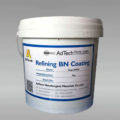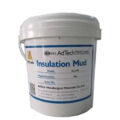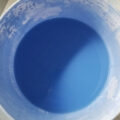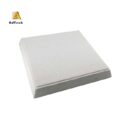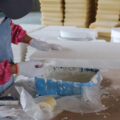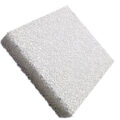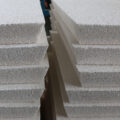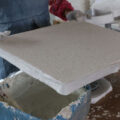Boron nitride is usually applied to the filter in the form of a water-based slurry. The particle size of boron nitride is preferably at least 1 micrometer to no more than 15 micrometers. Above about 15 microns, platelets can span surface undulations or pores, thereby reducing effective porosity. The preferred particle size is about 5 to about 14 microns. The layer thickness of the BN coating is preferably just large enough to ensure adequate vapor protection, and above this threshold, the additional materials used are of no benefit and are therefore preferably avoided. The layer thickness is preferably at least 1 micrometer and not more than 200 micrometers. For boron nitride, the layer thickness is at least 1 micrometer and not more than 50 micrometers.
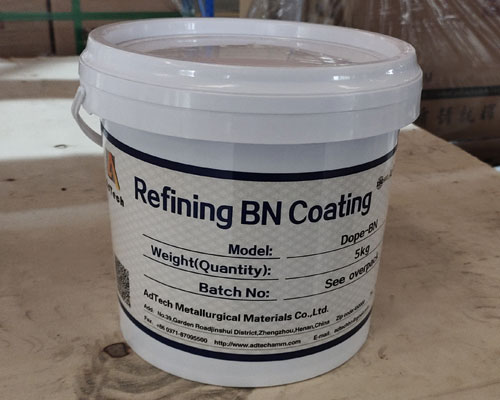
The coating is preferably applied by immersing the filter in a coating suspension of BN. After the suspension is partially discharged from the filter, it is placed in a spin coater and rotated at high rpm to force the remaining excess suspension to drain from the filter. The thickness of the coating can be controlled by the rpm of the spin coater, the solid load of the coating slurry and the rotation period. After the coating operation, the coated filter is placed in a dryer to remove water at a temperature of about 50°C to about 200°C.
The filter is then heated to remove the volatile components of the suspension and, if necessary, to volatilize the organics. Components and form a strong bond between the coating and the ceramic substrate. For the boron nitride coating, the temperature at which the coating is formed is preferably at least 300°C to no more than 800°C. Below about 300°C, the formed layer may not have sufficient strength, and above about 800°C, the BN-coated layer may start to oxidize.
Preferably, the coating is spin-coated to spread the coating throughout the ceramic foam, wherein a suspension of BN is applied to the ceramic filter, and the filter is rotated at a high speed, thereby forcing the suspension into the ceramic filter by centrifugal force. And preferably through ceramic foam, so as to cover the entire surface of the ceramic pillar with the suspension. The filter is then heated to remove the volatile components of the suspension and, if necessary, to volatilize the organic components.
The rotation speed depends on the rotation radius of the filter. For a conventional commercially available spin coater, based on a drum having an average diameter of 762 mm (30 inches), the rotation rate is at least 200 rpm to no more than 3000 rpm. Below about 200 rpm, the penetration and coverage obtained are insufficient. Above about 3000 rpm, there is no other benefit.

